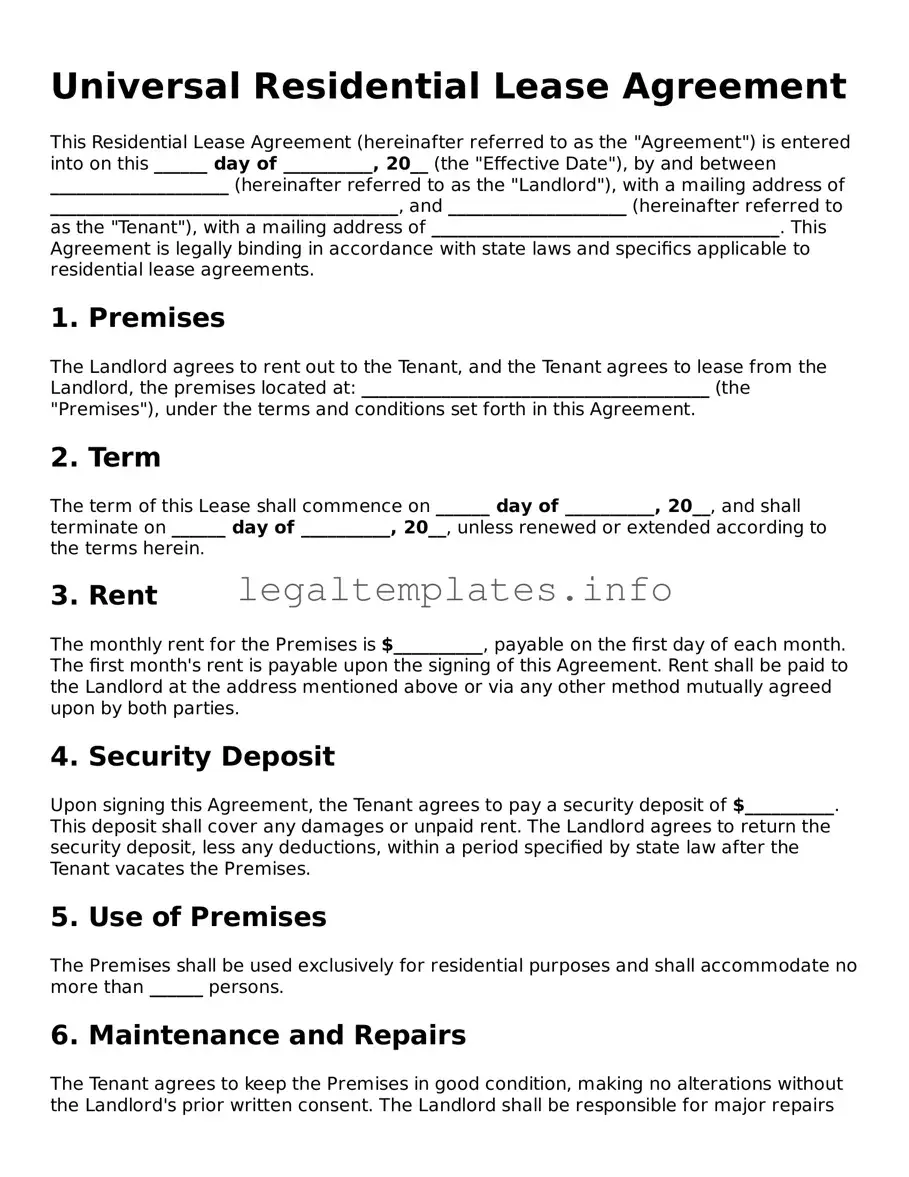Universal Residential Lease Agreement
This Residential Lease Agreement (hereinafter referred to as the "Agreement") is entered into on this ______ day of __________, 20__ (the "Effective Date"), by and between ____________________ (hereinafter referred to as the "Landlord"), with a mailing address of _______________________________________, and ____________________ (hereinafter referred to as the "Tenant"), with a mailing address of _______________________________________. This Agreement is legally binding in accordance with state laws and specifics applicable to residential lease agreements.
1. Premises
The Landlord agrees to rent out to the Tenant, and the Tenant agrees to lease from the Landlord, the premises located at: _______________________________________ (the "Premises"), under the terms and conditions set forth in this Agreement.
2. Term
The term of this Lease shall commence on ______ day of __________, 20__, and shall terminate on ______ day of __________, 20__, unless renewed or extended according to the terms herein.
3. Rent
The monthly rent for the Premises is $__________, payable on the first day of each month. The first month's rent is payable upon the signing of this Agreement. Rent shall be paid to the Landlord at the address mentioned above or via any other method mutually agreed upon by both parties.
4. Security Deposit
Upon signing this Agreement, the Tenant agrees to pay a security deposit of $__________. This deposit shall cover any damages or unpaid rent. The Landlord agrees to return the security deposit, less any deductions, within a period specified by state law after the Tenant vacates the Premises.
5. Use of Premises
The Premises shall be used exclusively for residential purposes and shall accommodate no more than ______ persons.
6. Maintenance and Repairs
The Tenant agrees to keep the Premises in good condition, making no alterations without the Landlord's prior written consent. The Landlord shall be responsible for major repairs unless the damage is caused by the Tenant's negligence or misconduct.
7. Restrictions
- Tenants shall not engage in any illegal activities on the Premises.
- Pets are [allowed/not allowed], according to the terms agreed upon herein.
- Smoking within the Premises is [allowed/not allowed].
8. Termination
Either party may terminate this Agreement with ______ days' notice. In case of breach of Agreement by the Tenant, the Landlord reserves the right to initiate the eviction process in compliance with state laws.
9. Governing Law
This Agreement shall be governed by the laws of the State in which the Premises are located, without giving effect to any principles of conflicts of law.
10. Entire Agreement
This document, including any attachments and exhibits, constitutes the entire agreement between the parties concerning its subject matter and supersedes all previous communications, representations, or agreements, either verbal or written.
IN WITNESS WHEREOF, the Parties have caused this Agreement to be executed as of the Effective Date first above written.
Landlord's Signature: __________________________ Date: ______
Tenant's Signature: __________________________ Date: ______
